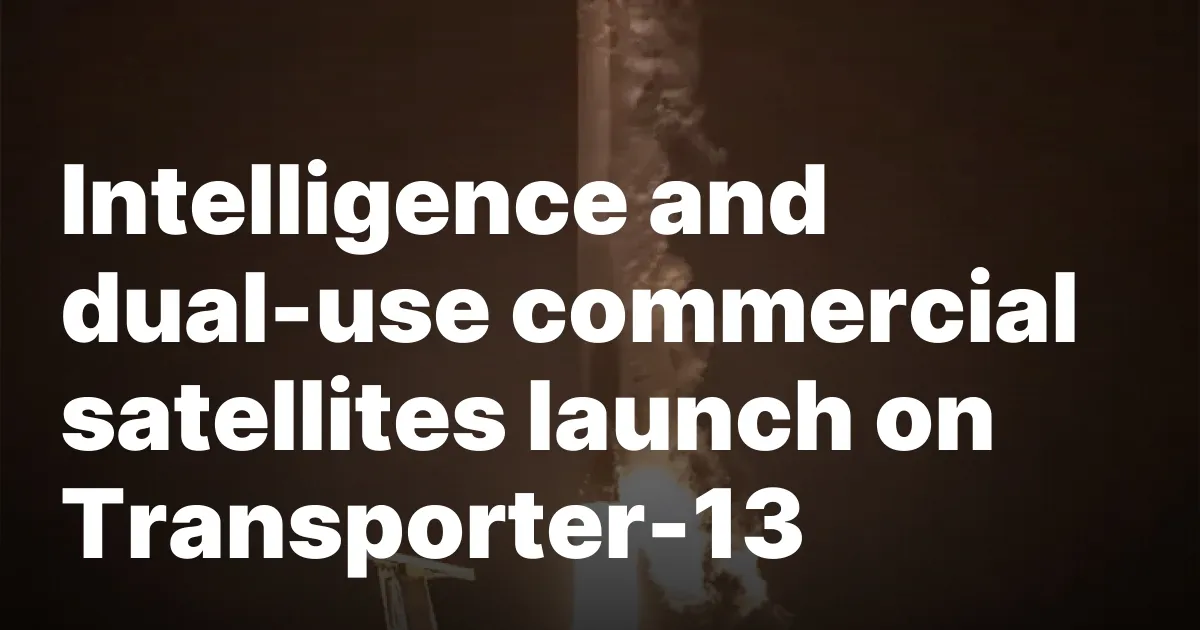
On March 15, 2023, SpaceX successfully conducted its Transporter-13 rideshare mission, deploying dozens of small satellites into orbit. This mission marks the 13th dedicated small satellite rideshare by SpaceX, establishing a reliable and efficient pathway to orbit for both commercial and government clients. Among the impressive array of 74 payloads were several satellites funded by U.S. military and intelligence agencies, showcasing the mission's significance in both the commercial and defense sectors.
One of the key highlights of the Transporter-13 mission was a technology demonstrator from the National Reconnaissance Office (NRO). The NRO is responsible for the design, construction, and operation of U.S. spy satellites. This particular payload comprises two cubesats, developed and operated by the NRO’s Advanced Systems & Technology Directorate, aimed at fulfilling an undisclosed research mission.
The mission also featured several small satellites from commercial startups that have secured military funding for exploring various defense applications. Notably, Earth observation startup Albedo launched its first satellite, Clarity-1, designed to operate in very low Earth orbit. This satellite aims to deliver high-resolution visible and thermal imagery, a capability increasingly valuable for military and intelligence operations. Albedo recently obtained a U.S. Air Force Strategic Funding Increase (STRATFI) contract, potentially worth $12 million, with partial funding from the Air Force Research Laboratory.
Another participant in the mission was MuonSpace, a company focused on wildfire monitoring. MuonSpace successfully launched its FireSat Protoflight satellite, a prototype intended for a future constellation of satellites. The company has received a $2.9 million contract from SpaceWERX, the technology arm of the U.S. Space Force, to assess its technology for military applications. This includes providing high-resolution imagery of cloud cover and weather conditions, which are crucial for military and intelligence operation planning.
Turion Space, a space services startup, deployed its Droid.002 spacecraft during the Transporter-13 mission. This spacecraft is designed for space situational awareness and monitoring of space debris. Turion has secured a $1.9 million contract from SpaceWERX to develop technologies for autonomous spacecraft docking and maneuvering, capabilities that the Space Force is keen to explore for engaging uncooperative space objects and enhancing mobility in space.
The mission also included a significant payload from Varda Space Industries, which launched its W-3 reentry capsule. This third capsule is designed for in-space manufacturing and serves as a testbed for materials and payloads subjected to hypersonic flight speeds. The W-3 is equipped with a navigation system known as an Inertial Measurement Unit (IMU), developed by the U.S. Air Force in collaboration with Innovative Scientific Solutions Incorporated. This system will be tested at reentry speeds that it was designed to handle, but has yet to encounter in actual flight conditions.
After completing its mission, the W-3 capsule will remain in orbit for several weeks before reentering Earth’s atmosphere and landing at the Koonibba Test Range in South Australia. The Transporter-13 mission exemplifies SpaceX's role in advancing both commercial and military space capabilities, solidifying its position as a leader in the aerospace industry.